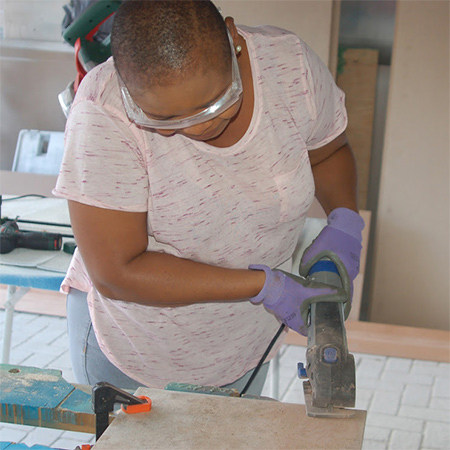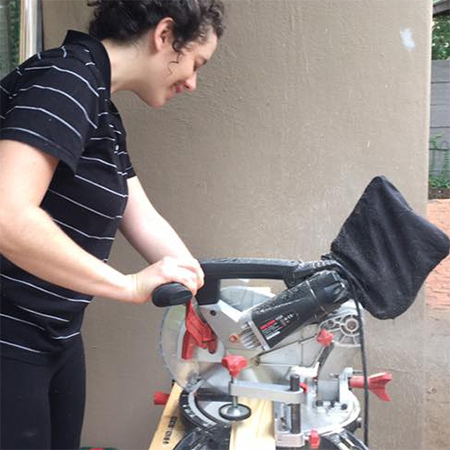DIY safety tips everyone should know
As you become more competent at DIY projects, you're also more casual about safety. While DIY should be enjoyable, let's not forget about safety when using woodworking and power tools.
Over the many years I have done DIY, I can honestly say that I have become a bit complacent about safety. Do I wear gloves? Not unless I have to. Do I wear safety glasses? Only when absolutely necessary. It's only when presenting at DIY Divas workshops and talking about safety that I realise I need to pay more attention to safety guidelines.
It can happen to anyone using power tools. You become so over-confident you think accidents are only for a novice. But that's not the case, and there are a few guidelines that everyone using power tools should follow to reduce the possibility of injury.

When buying your first set of power tools, you should also add safety goggles and gloves to your shopping list. Cutting and sanding SupaWood (MDF) produces fine particles of dust that can be harmful to your health. A basic dust mask will filter out harmful particulates.
Safety goggles are especially important when working with tools that produce chips, splinters or sparks, such as when cutting tiles or metals. You only need a tiny fragment in your eye to cause serious damage.
You will also need a pair of safety gloves when working with wood, to protect your hands from splinters and cuts.
If you will be using power tools that are extremely noisy, such as an angle grinder or router, you will also need ear protection. This can be as basic as ear plugs, or you can splurge on a set of noise-blocking ear cans.

You'll want to be as comfortable as possible when doing DIY or woodworking projects, but it's important to wear the right clothing for the project you will be doing. Don't wear loose clothing when operating larger woodworking machinery, and avoid wearing items that could get caught up in gears or blades. And definitely save the jewellery for posing after your project is complete!
If you are tackling painting projects, it's a good idea to don a scarf or cap to protect your hair from paint spatter - and to wear disposable gloves when using oil-based enamel paint, stain, sealer or varnish.

I say it time and time again, power tools are only as dangerous as the person using them. If you use power tools within the proper guidelines and take cognisance of a few safety rules, power tools are safe. If you are in any doubt as to using a specific tool - read the instruction manual.
- Unplug tools when making adjustments, changing disks or blades.
- Always make sure than any power cord is behind you, or safely out of the way.
- Use only sharp disks and blades.
- If you are working with reclaimed materials, always check for brads, nails or screws, or anything else that will damage your tools or cause kick back.
- Have sufficient lighting in your workshop or work area.
Be aware at all times. It's so easy to be distracted and that's when accidents happen. It's a bit like flying a plane, but instead of a checklist you inspect your tools, apply a few basic rules, and use common sense when tackling DIY and woodworking projects.









